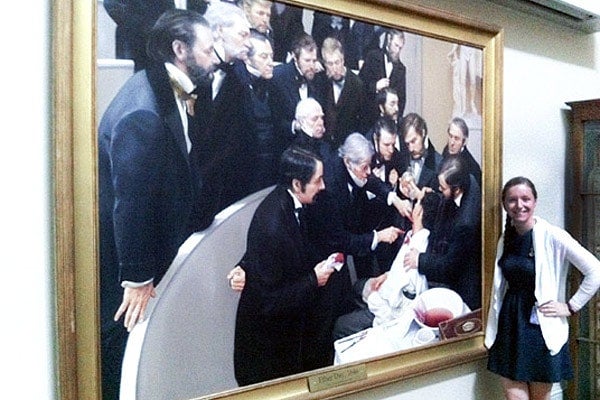
Summer interns: U of T students around the world
Published: August 10, 2012
It's a typical Monday morning just before 8 a.m.
Michelle Hanbidge sits at her desk in the still-quiet Department of Anesthesia, Critical Care, and Pain Medicine at Massachusetts General Hospital in Boston, sifting through emails while her co-workers arrive at the building, just off the main campus of MGH, and call out their welcomes.
By 8:30 a.m. Hanbidge is analyzing data she's been compiling on a pilot project for the hospital and its partner institutions before she's called out to troubleshoot some of the technology of the project, a hand-held device that captures vital signs, allowing medical personnel to enter a patient's vital measurements into an electronic medical record immediately, ensuring that doctors and emergency personnel can obtain instant access to up-to-the-minute vital information.
For Hanbidge, it's a typical day as a Clinical Engineering intern - helping to develop something with the potential to improve the care of countless patients.
Clinical Engineering tends to conjure images of engineers crafting clever new walking canes and wheelchairs. But the field is vast, and ranges across every aspect of patient care—from how to ensure patients receive correct drug dosages to how to organize hospital systems for more effective overall care.
"Students are learning skills related to running experiments, designing technologies, building prototypes, and statistical analysis of various types of health data," explains Associate Professor Alex Mihailidis, Coordinator for the Clinical Engineering graduate program and Associate Professor at Institute of Biomaterials and Biomedical Engineering (IBBME) and the Department of Occupational Science & Occupational Therapy.
And the graduate student interns from U of T are making sizeable, lasting contributions to hospitals every year.
"I'm playing a lead role in evaluating the success of the vital signs capture system at the various pilots in terms of utilization, time savings, accuracy of vital signs recorded, resources used, and user feedback," explains Hanbidge. "I've also been teaching the biomedical technicians at Brigham and Women’s Hospital how to set up and update the handheld devices so they can upgrade their system."
The vital signs capture system is not the only project Hanbidge is working on as part of her internship.
"I'm also involved in the user interface design for a media repository of operating room images and videos that allows surgeons to take pictures/videos during their procedures and then access them from any computer."
Every student in the masters in health science program works a total of 1225 paid hours of internships as a major component of their degree.
"The chance to learn these types of skills is unique to the clinical engineering program and helps develop our students into well-rounded engineers," Mihailidis says.
And the experiences the students come away with are their own, says Hanbidge, citing the invaluable "people skills" the internship has helped her hone.
"Two people could walk away from the same internship with very different experiences," she says. "But whatever it is you are working on, you quickly become the expert in it, which is a satisfying feeling."



